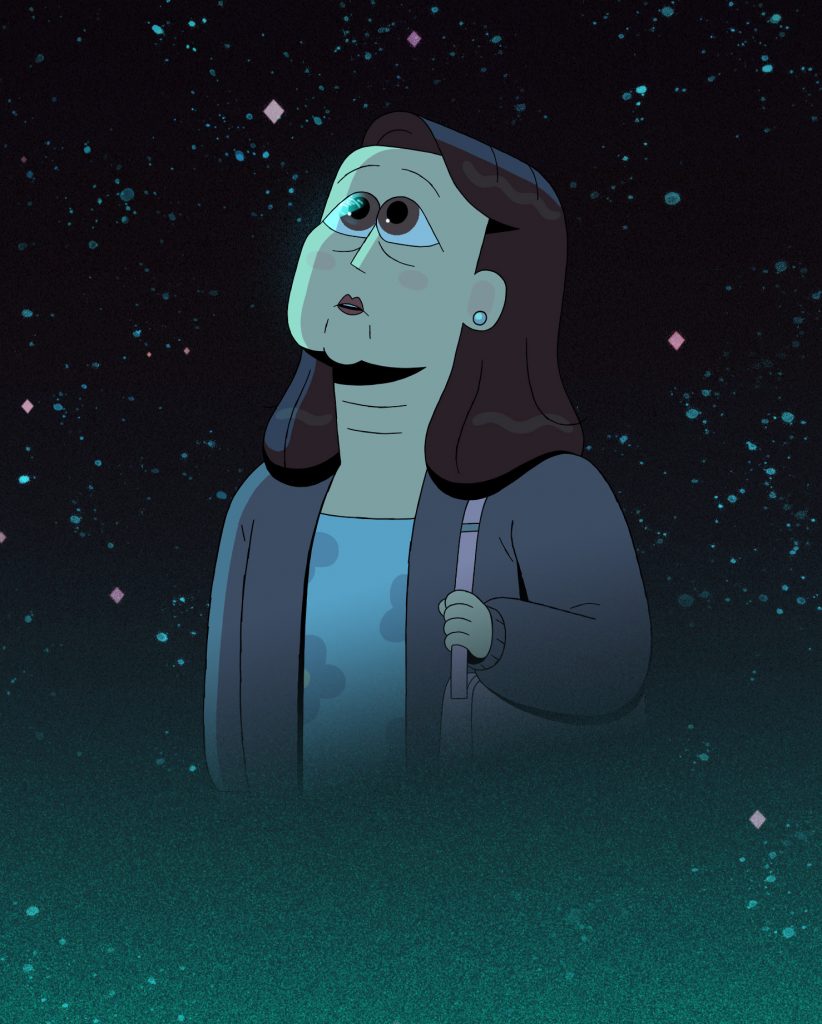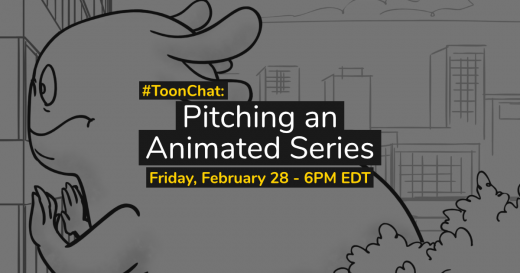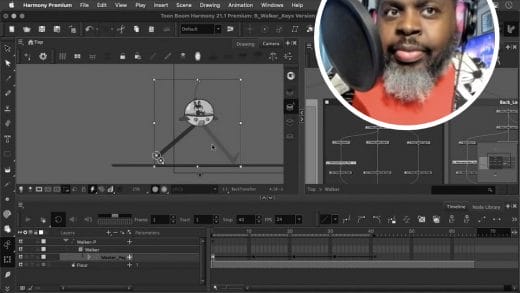
In Netflix’s comedy-drama Carol & the End of the World, a rogue planet is hurtling towards Earth. Imminent death is completely unavoidable. Most of humanity races to the heights of hedonism as they attempt to live their last days to the absolute fullest. But not Carol.
Despite the urging of those around her, Carol just wants to continue with her regular routine. At the end of everything, she finally achieves connection and understanding with like-minded people, and starts to live for the first time – on her own quiet, mild-mannered terms. Animated by Bardel Entertainment, Carol & the End of the World is a very unusual animated series, in the very best way.
We had the chance to speak with Bardel Entertainment’s Johnny Tesoro (head of animation) about the subtle animation in Carol & the End of the World, unlikely heroines, and creating an apocalypse story during a global pandemic.
What was Bardel’s involvement on Carol & the End of the World?
Johnny: Sometimes we have varying asks from clients. Sometimes they provide a script and then we do everything else.
[Netflix] had an art director on their side. They had a storyboard team on their side, so we did everything we call post pre-production. So backgrounds, builds, character, animation, effects, animation, and compositing and editorial. Which is very similar to how we contribute on Rick and Morty and Solar Opposites.
And then for character animation, that’s relatively obvious. We do all the posing and animation for the effects. Sometimes there would be a very specific effect that the client was looking for, and they would provide a design. But a lot of times our effects team was just tasked with doing some research and development on our own.
And our magic trick to the audience is not to reveal that we’re doing a cut out pipeline, so that requires a lot of hand drawing. Not every single piece of the characters are redrawn. But really we’re really judicious about redrawing hands, for example, or facial features, or torsos, to give it a really three-dimensional feeling that you would see more in a live action or 3D pipeline.
There’s so much nuance to their facial expressions and body language that the audience could doubt it was made in a cut-out pipeline.
Johnny: I’m very pleased that that’s your reaction. Because if there was a moment of doubt in your mind that it was a cut out pipeline, and we’ve done our jobs correctly.
I have to also acknowledge the power of Toon Boom Harmony when it comes to character animation. Because a lot of times when we’re doing nuanced details in performance, especially for acting. The use of deformers and the way Harmony allows us to rig allows us to have a really high quality performance that you wouldn’t get in any other software.
And that just keeps on getting better and better. We recently saw a demonstration for Harmony 24, and how amazing the power of these new deformers are! And we were still already relatively happy with what was already existing in Harmony 20, and currently in 21 for us. I think the power of Harmony allows creators and studios like us to be able to tell stories that you wouldn’t normally be able to tell in other software.

What was it like to create an intimate character piece about the end of the world? In a way, it feels like we all just survived our own versions of that.
Johnny: It was refreshing to try something different in mood and tone from what we’re used to seeing in the animation medium.
In my opinion, though, I don’t think there was a connection between the pandemic and the story. The way we were telling the story was at the forefront of our minds. We were doing the work during the pandemic. There’s a lot of uncertainty. And working was a welcome distraction during that time. So I think we were just focused on making something beautiful and really artful.
But Carol’s story is more about finding a place to fit in, despite the chaos of her situation. She finds a tribe of like-minded people who are coping with their impending doom the same way, with distraction and repression.
I think the parallel with the pandemic is a little limited, because in the real world we all had hope. In the end we all had hope for a vaccine. We all hoped that this was going to be temporary. Carol’s story is more about how we would behave if there was no hope. But entertainment during the pandemic was our industry’s calling, and we hope we provided some much-needed levity at that time.
Carol herself is a really refreshing choice for a heroine, especially in an end-of-the-world story. What was it like creating a series about a mild -mannered, middle-aged woman?
Johnny: You know, it was really refreshing that the creator decided to use a female lead in this story. And also a middle-aged woman. And a woman who has a very flat affect.
Especially in the beginning of her arc, she suffers from depression. From an animation point of view, she’s very muted and understated. And so that’s the antithesis of cartoony movements, which is what most animators are used to animating. So we had to find a way to make her interesting, yet still be true to her stoicism.
However, her character arc changes, and she becomes more animated – pardon the pun – as the series progresses. It was really really fun and amazing to try and change the way she behaves from the first episode to the last. A lot of us enjoyed having her on a motorcycle and surfing around the world. That was a very compelling and gratifying way to approach the animation.
In character animation, for example, we always are looking for accents in the dialogue. It changes in volume, changes in tone. And with Carol, she’s just really, really flat. We would talk a lot about it in meetings. How do we make her still interesting?
She’s the lead character. Is the audience going to gravitate towards her? Are they going to be repulsed by her because she is so flat? And the solution we found was the juxtaposition between her and the more animated characters, like Louise, who’s just a ball of positivity. That was a lot of fun.
I love food, so I’m going use a food analogy. It’s like a pie. You have a little bit of salt to make the sweet taste even sweeter. What made the overall sequences and scenes more compelling was showing her play across her parents, for example, in the first episode. They’re nudists.
I was reminded of the MTV series Daria. It’s one of the rare shows where the titular character is the straight man. Most of the comedy comes from Daria having a straight face while everybody else is ridiculous. And in Carol & the End of the World, we learn a lot about Carol, not necessarily in what she’s expressing, but in how she’s reacting.
Johnny: I couldn’t agree more. And I think that no matter how gregarious or extroverted we all might be, there’s always a mixture of personality traits. I think she can appeal to a wide audience. There’s always going to be someone who feels a little ambiguous about what’s going on around them. We all have moments like that.
To bring it back to Harmony – other animation software wouldn’t allow you to get subtle, very slow, nuanced movements like Harmony does. Sometimes, if you move a character very, very slightly, it gets lost, because for whatever reason that software can’t keep up with very small increments of movement. So the power of Harmony was to be able to take a very, very slow, methodical, introverted character, and get some really beautiful pauses in the delivery and in the performance.
We did this one animation test that I love that never made it to the show. She’s in her bedroom. She walks over to her dresser and looks in the mirror, and there’s just the longest pause. And everything’s done with her eyes.
We wanted to see how much subtlety we could animate using Harmony. How could we hold her still, but still tell a story, without having to use tricks. I think we actually achieved it quite well. And then she pulls away, and she walks over to the edge of her bed, and she kind of flops down, showing the juxtaposition of very little movement to a larger movement.
Miyazaki talks about the importance of the “ma” in animation, the pauses between moments. I thought Carol really captured that. You can feel the characters thinking. That sort of nuance, that sort of stillness isn’t the norm in animation.
Johnny: I agree with you. I keep thinking about her character arc, and the very first pilot episode. [Director] Dan [Guterman] captures loneliness in a really amazing way. And I think a lot of that was using pauses. There’s one scene where she’s making her breakfast. And there are super long cross dissolves.
So it shows the loneliness of a person living by themselves when the entire world is looking for connection. And she just wants to be left alone because of her mental health. It’s hard to tell that story. It’s a very, very deep and difficult kind of message to relay to an audience. I think he captured it beautifully, just with where we’re putting the camera, that negative space.
All that to me is real genius and really masterful, and I think it captured it well. and it’s not something you see a lot, especially in 2D animation. We’re kind of like just flashing brilliant lights at people and trying to get them distracted.
It’s interesting when you set the pace and the tone right away. This is going to be a bit more esoteric. We want you to really slip deep into this warm bath that is Carol’s universe.
- For more info about Bardel Entertainment check out the studio’s website and Carol & the End of the World‘s portfolio page.
- Connect with Bardel Entertainment on Facebook, Instagram, Threads and LinkedIn. Interested in joining their crew? Visit the studio’s careers page.
- Ready to create incredibly subtle character animation? Artists can download a 21-day trial of Harmony Premium.

